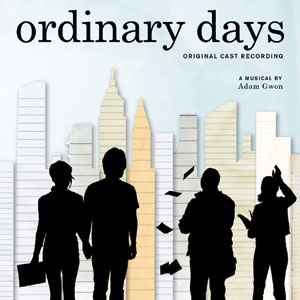
Image credit: Fresno Beehive
[Spoiler alert: if you are fortunate enough to have the opportunity of attending Ordinary Days, know that the following describes much of the play’s ending.]
Manalive, the novel by G.K. Chesterton, opens with miraculous gust of wind, a meterological phenomenon described as “the good wind that blows nobody harm.” I always found something particularly memorable about that image of a moment of impossible happiness, and it gusted into my mind once more when I attended the recent Austin production of the chamber musical, Ordinary Days.
Ordinary Days offers more than a miraculous gust of wind. Instead, its climax brings all four of the play’s cast members into contact by a single, bizarre spectacle. The image is explicitly identified not with nature, however, but with one of the greatest recent tragedies of our nation: the destruction of the World Trade Center on September 11. I’m not sure that the play’s treatment of 9/11 is necessarily its most brilliant moment—but it does offer an interesting example of one artist’s attempt to use visual and narrative imagination to recontextualize the image that has driven so much of America’s foreign and domestic policy over the last ten years.
Recent comments
2 years 29 weeks ago
2 years 44 weeks ago
2 years 44 weeks ago
2 years 50 weeks ago
3 years 4 weeks ago
3 years 4 weeks ago
3 years 4 weeks ago
3 years 6 weeks ago
3 years 6 weeks ago
3 years 6 weeks ago